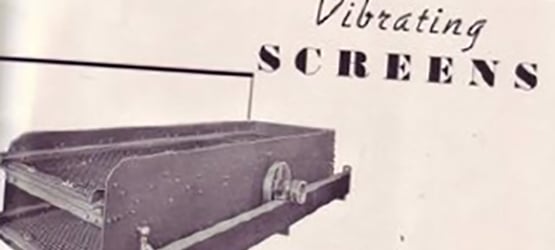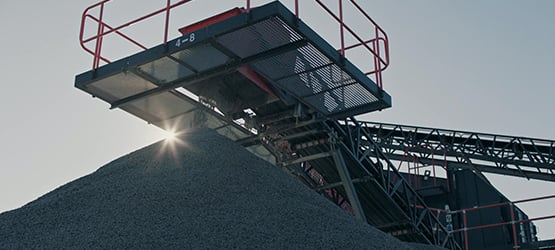From ancient Greece to the 21st century

Mechanical screening is not a new concept.

Mechanical screening is not a new concept.
In ancient Greece, as long ago as 2,000 BC, numerous methods were used to isolate valuable metals. These include flotation, cupellation, and – with the use of reeds and horsehair – screening. Naturally, this is a world away from the sophistication of modern screening techniques, but the basic principle remains the same. Materials are separated into different particle sizes (fractions) by manually shaking a screen that restricts objects above a certain size from passing through. The principle of separation was thus introduced.
In the early 1900s, a significant advancement was made in screening technology with the invention of mechanised vibrating screens. A spate of patents in the first decades of the twentieth century marked the introduction of screens that could move without manual effort, and affirm the second fundamental process in mechanical screening: stratification. Put simply, stratification happens when the motion of a screen deck or conveyor makes the material bed ‘fluid’ which reduces internal friction, making it easier for finer particles to fall to the bottom.

These two processes introduce a third key concept: probability. When one thinks about stratification and separation, a couple of questions inevitably arise. How likely is it that undersize particles will find an aperture to pass through, and what can be done to maximize the chances?
Of course, innovations and technical advancements have transformed mechanical screening over the last century, but these three concepts – stratification, separation, and probability – are still central to the screening process. And screening is still central to a number of industries.
Wherever materials are processed, from mining to recycling to agriculture, screening is vitally important, and it often offers a surprisingly effective way to improve return on investment. In the mining, quarrying, and construction industries, screening provides several crucial functions. It isolates the final, sellable product, it ensures correct particle size for further processing, it removes useless (adverse) particles, and it decreases the load on other processes, like crushing.
Throughout this series, we’ll take you from the basics of screening through to more detailed explanations of how to optimize your screening processes. The chapters will combine to give you a thorough understanding of how effective screening can make your operation more efficient.